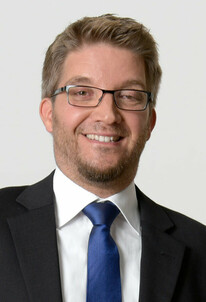Publikation
PELLETSOLAR-2 – SYSTEMOPTIMIERUNG VON PELLETS-FEUERUNGEN IN KOMBINATION MIT THERMISCHEN SOLARANLAGEN BASIEREND AUF DYNAMISCHEN SIMULATIONEN UND MESSUNGEN IM PRÜFSTAND
Im Rahmen des Projektes PelletSolar-2 wurden zwei Anlagen für Raumheizung und Warmwasser mit Pelletkessel und Solaranlage am SPF mit der Concise Cycle Test Methode geprüft. Dabei zeigte sich, dass die Pelletkessel beider Anlagen im dynamischen Realbetrieb die vorhandene Möglichkeit der Leistungsmodulation kaum bis gar nicht zu nutzen vermochten. Anhand von Simulationsmodellen, die mit den Messdaten des 12-Tages Tests validiert wurden, konnte ein erhebliches Potential zur Steigerung der Effizienz beider Anlagen auf Systemebene identifiziert werden, insbesondere durch Sicherstellung einer modulierenden Betriebsweise der Pelletkessel. Ergänzend zur energetischen Bewertung wurden die Emissionen der Systeme berücksichtigt. Basis dazu bildeten Emissionsfaktoren für den dynamischen Betrieb, welche an der Hochschule Luzern emlittelt und in die Berechnungen einbezogen wurden. Die Resultate zeigten, dass unter der Voraussetzung guter Betriebsbedingungen bei Teillast die Jahresemissionsfrachten durch leistungsmodulierende Betriebsweise erheblich gesenkt werden können. Ein Gerät mit schlechten Betriebsbedingungen bei Teillast (insbesondere hohe λ-Werte und CO-Emissionen) kann im modulierenden Betrieb jedoch höhere Gesamt-Emissionsfrachten verursachen als im On/Off-Betrieb.
Abstract
Within the project PelletSolar-2 two combisystems combining automatically fired pellet boilers with solar thermal collectors were tested with a test cycle called the Concise Cycle Test. It was found that both of the pellet boilers weren't able to operate in a power modulation mode under the realistic conditions of the test, even if they had the possibility to do so. Subsequent to the physical test sequence, the acquired data were then used to generate measurement-validated simulation models that were used to evaluate various system setups in light of annual performance summaries. The simulations revealed a considerable potential for improvement in the overall efficiency of the systems, in particular by enabling the power modulation of the boilers. In addition to the evaluation of the energetic efficiency, the emissions (subject to the running mode of the boiler) were also considered. This was achieved on the basis of emission-factors that were determined for transient operation at the Lucerne University of Applied Sciences. The results show that so long as continuous partial-load operation is achieved with low emission-factors, a modulating boiler operation reduces annual emissions significantly. Should a system exhibit bad characteristics while modulating (in particular high λ-values and CO-emissions), the annual emissions can be higher compared with a simple On/Off operation.
Resumé
Dans le cadre du projet PelletSolar-2, deux systèmes de chauffage combiné avec chaudière d'appoint à pellets ont été testés au SPF avec la méthode du Concise Cycle Test. La possibilité de modulation de puissance lors du fonctionnement dynamique des deux systèmes ne pouvait guère ou pas être constatée. Sur la base de modèles de simulation, qui ont été validés avec des données mesurées lors des tests de 12 jours, une identification d'un potentiel d'accroissement d'efficacité de manière significative a pu être constatée au niveau des installations pour les deux systèmes de chauffage, notamment en assurant un fonctionnement modulant des chaudières à pellets. En complément de l'évaluation énergétique, les émissions des systèmes ont aussi été prises en compte, en utilisant les facteurs d'émissions pour un fonctionnement dynamique déterminé à l'école supérieure de Luzern. En supposant un fonctionnement à charge partielle efficace et pauvre en émissions, les résultats ont montré qu'une réduction du taux d'émissions annuelles durant le fonctionnement modulant peut être atteinte. Un appareil modulant fonctionnant à charge partielle en mauvaise conditions (particulièrement des valeurs λ et des taux d'émissions de CO élevés) peut provoquer des taux d'émissions globale plus important qu'état de marche/arrêt.




